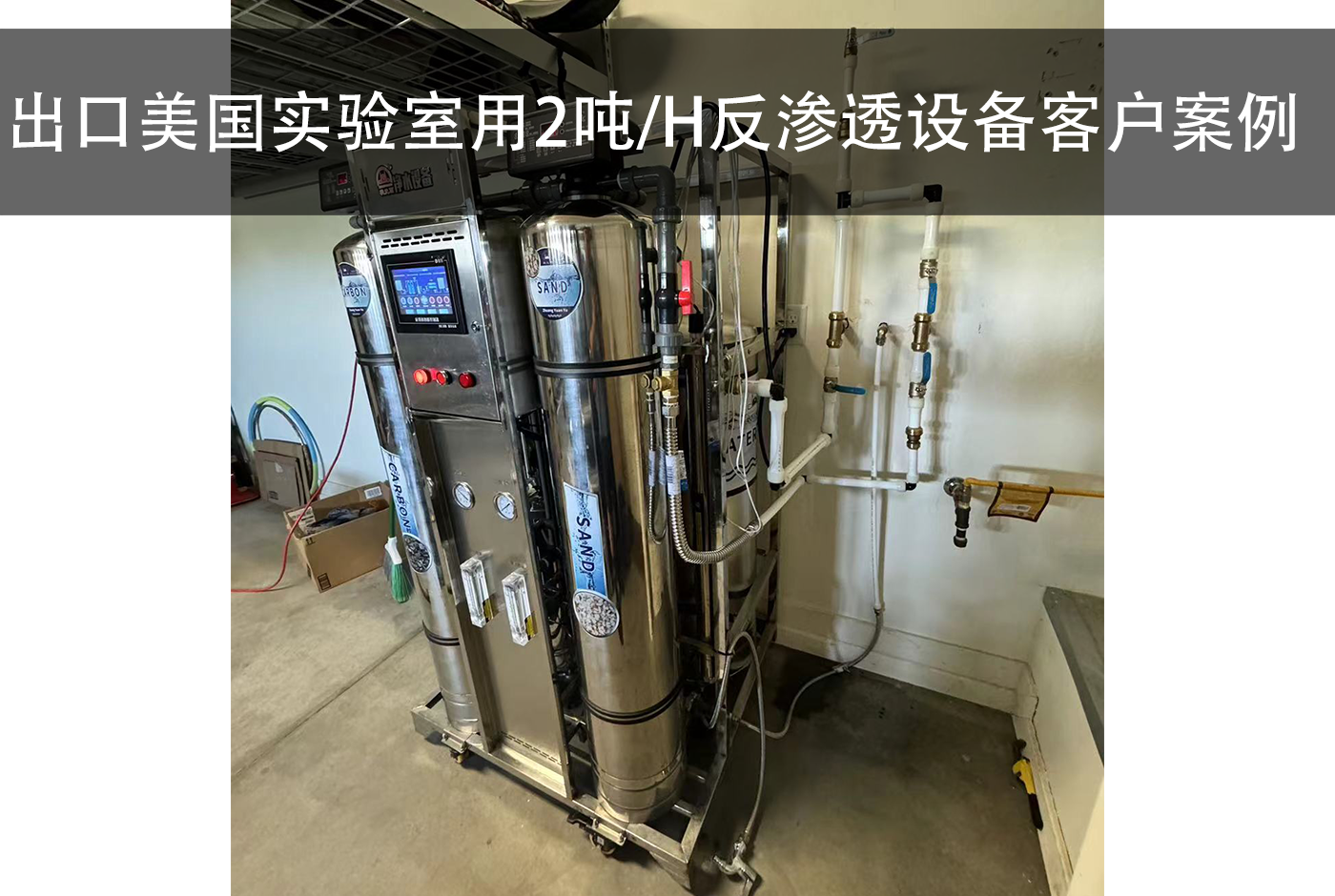



1: Problem description:
A laboratory in the United States needed a system that could treat municipal tap water to pure water standards, To meet its scientific research and experimental needs. The system needs to be stable, Efficiently deliver 2 Tons of/Hours of pure water supply.
2: Application scenario:
Need to communicate with the customer in detail, Understand the specific application scenarios, Such as biomedical experiments, Chemical analysis, Electronic component cleaning, etc, Because the specific requirements for water quality in different application scenarios may be different.
3: Raw water quality and quantity:
type: Municipal tap water
Standard: Customers are required to provide specific water quality testing reports, Including but not limited to suspended solids, turbidity, Residual chlorine, Heavy metal content, Microbiological and other indicators, In order to carry out targeted pretreatment design.
4: Water quality requirement:
Electric conductivity: Usually laboratory pure water requires a conductivity lower than 1μS/cm (Can be adjusted to lower according to experimental requirements, Such as 0. 1μS/cm Or lower) .
Electrical resistivity: Inversely proportional to electrical conductivity, High purity water usually requires resistivity higher than 1MΩ cm.
Water hardness: Softening is usually required for very low hardness, Avoid interference with the experimental results.
pH value: According to experimental requirements, May need to be adjusted to a specific range, As neutral as (pH 7. 0 ± 0. 2) .
Special index: Such as TOC (Total organic carbon) , SiO₂ (Silicon dioxide) Etc, It should be determined according to the specific requirements of the experiment.
5: Water requirement:
Water consumption per hour of production: 2 Tons of/Hour (s)
Consideration factor: The daily running time of the laboratory should be considered, Water consumption during peak hours and possible emergency stand-by requirements.
6: Device installation environment:
Water access: Ensure that there are sufficient inlet and outlet water pipe connections, The location is reasonable and easy to install.
Power arrangement: Based on equipment power requirements, Provide stable three-phase or single-phase power supply, And consider the necessary backup power supply scheme.
Actual installation site: Measurements are required and detailed site dimensions are provided, Inclusive height, breadth, Length and load-bearing capacity, Ensure safe and stable installation and operation of the equipment.
Although mentioned "Standard for drinking water" GB5749-2022, However, this case should refer to the international standard for laboratory water use, Such as ASTM D1193, ISO 3696 Etc, And the specific requirements of the customer's industry. Design principles include:
Ensure effluent quality is stable and meets or exceeds all customer requirements.
The system design should be efficient and energy efficient, Reduce operating costs.
Modular design, Facilitate future maintenance and upgrade.
With security in mind, Including electrical safety, Operational safety and anti-pollution measures.

Process flow:
preconditioning: Remove suspended solids from raw water, Residual chlorine, Large particle impurities, etc, May include sand filtration, Carbon filtration, Softening step.
Reverse osmosis (RO) handle: The pre-treated water is fed through a high pressure pump RO Membranae set, Remove most dissolved solids, bacteria, virus, Reach the preliminary pure water standard.
Postprocessing (selectable) : According to effluent water quality requirements, May include mixed bed ion exchange, EDI (Electric deionization) isostep, Further reduce the conductivity, Improve water purity.
Disinfection and storage: Disinfect pure water (Ultraviolet disinfection) , And stored in stainless steel or polymer materials made of water storage tanks, Maintain water quality stability.
Distribution and monitoring: The pure water is transported to the laboratory water points through a pipeline system, At the same time set up online water quality monitoring equipment, Real-time monitoring of water quality indicators, Ensure stable and reliable water quality.
System advantage:
High efficiency and stability: Using advanced reverse osmosis and post-processing technology, Ensure the effluent quality is stable and reliable.
Energy saving and consumption reduction: Optimal system design, Reduce energy consumption and wastewater discharge, Reduce operating costs.
Automatic control: equip PLC Control system, Automated operation and remote monitoring, Improve management efficiency.
Easy to maintain: Modular design, Facilitates routine maintenance and troubleshooting.
Safe and reliable: High quality materials and advanced technology are used, Ensure the long-term stability of the system, Consider multiple safety precautions, Ensure the safety of operators.